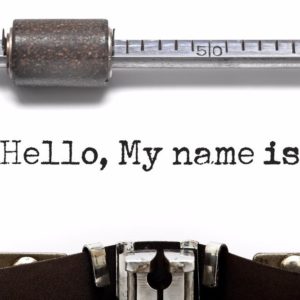

“You Have Reached The Voicemail Of…”
When’s the last time you listened to your voicemail?
I don’t mean the messages left by other people. I mean your own message – the one they’d have heard before they left their message. (Are you following this?)
What usually happens is we join a network, get our first mobile phone, record our voicemail message (if indeed you have…more on that later) and there it sits, like an ant trapped in amber, for the rest of time.
Even when you get a new phone, unless you’re changing service provider or getting a different number, the voicemail message you recorded will continue to be the one people hear. And every time they do, they’ll be gathering clues to your personal brand.
What are they hearing?
Back to what I was asking before: When was the last time you listened to your voicemail? And, more importantly, what does it say?
If you’re thinking, ‘I actually have zero idea what my voicemail sounds like,’ then stop reading this immediately and take a listen. (Don’t forget to come back though.)
If you’re thinking, ‘It’s the bog-standard spiel everyone has,’ then it’s time for a re-record. (My top tips below will help with that.)
If you’re thinking, ‘I’ve got this one sussed – it’s a great-sounding message, not run-of-the-mill and definitely portrays my personal brand in a positive light,’ then hats off to you. (Although you may still want to read on in case there’s anything you’ve missed.)
What makes a good voicemail message?
I’m glad you asked. First off…
1. Record a personalised message
How do you feel when you get a non-personalised message? You know, something along the lines of, “This is the voicemail messaging service for 07…”
Do you feel 100% confident leaving a message? Or is your subconscious anything like mine, which begins an inner monologue along the lines of:
‘Hmmm, was that the number I dialled? I’m not sure. Maybe I shouldn’t leave a message. Or maybe I need to dial again and listen more closely. Oh, this is all turning into a right palaver. And I’m now associating this feeling of annoyance with this person’s brand. Pah!’
So the gist of what I’m saying is you need to record a personalised message if you want to create a positive impression of your personal brand. (The clue’s in the word ‘personal’ there people.)
2. Avoid negative language
The bog-standard message we tend to use in the UK is , “I’m sorry I can’t take your call. Please leave a message and I’ll get back to you.”
This is less than desirable for two reasons:
1) You have a message that is doing nothing to represent the fact you’re an individual with your own personality and
2) You’ve included the word ‘sorry’, which is top of the list for negative language and, worse than that, isn’t even required. Because unless you knew the exact time the person was going to ring, then what have you got to apologise for?
3. Add a hint of your brand
I’ve now convinced you to a) record a personalised message and b) avoid using wording that has a negative effect on your personal brand. (I have convinced you, haven’t I?) But what should you actually say in this new and improved version?
The answer will depend on what you want to convey about your personal brand. Here’s what my own voicemail says, along with my dissection of why I’m saying it:
“Hi, this is Jennifer Holloway. [I include my name because I want the caller to feel 100% confident they’re through to the right person.] I’m busy right now [I’m someone who likes to squeeze as many things as possible into the time I have, leading my other half to give me the nickname Shoehorn Holloway.] but I promise I’ll return your call as soon as I get your message. [The word ‘promise’ is in there to reflect one of my personal brand Values, which is ‘If I promise, I’ll deliver (and I won’t promise unless I can).’ Thanks.” [Courtesy is another key Value so I end with a word I’d use if I were talking to the caller in person.]
Think about what your own key brand words are and find a way to incorporate them in your message. For instance, if you’re a caring person, say ‘I’d love to speak to you.’ [Love being the key word.] Or if you’re a happy person, end with ‘I hope you have a great day.’ [The intimation being that you’re planning to.]
It doesn’t have to be a convoluted process – even a single word to give a hint to your brand can be effective.
4. Don’t mislead the caller
I had a client once whose voicemail message was, “Hi. This is Jonathan. I can’t take your call right now but leave a message and I’ll get back to you.” Only he never, ever, ever did. No matter how many messages I left.
When I asked him why, he said, “Oh, I never listen to my voicemail messages.”
WTF! I’ve wasted all that time doing something you told me to do, when in fact you had no intention of keeping up your end of the deal. His voicemail was giving me – and everyone else who fell for it – a really negative impression of his brand.
So I made him change it. Now it says, “Hi. This is Jonathan. I don’t listen to my voicemail messages, so if you want to get hold of me please send a text or email instead.” Problem solved.
What are your tips for having a voicemail message to be proud of? And when’s the last time you checked what yours might be conveying? Or better still, what are the worst voicemail messages you’ve ever heard? There’s a comment box waiting for your response. Thank you.






I’m afraid nothing would be a greater turn off than to hear “I hope you have a great day”, when I am trying to get hold of somebody, however sincerely meant. Sorry! (I am British.)
More seriously, my mobile phone provider, EE, rarely sends voice messages promptly; often they are days late! Do others have this issue? Hard to respond in a timely fashion when you haven’t actually received the message.
I don’t have that issue with my Vodafone voicemail – must be really frustrating when you’re trying to create a good impression of your brand.